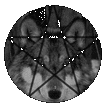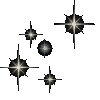Herbs, Essences & Plants
Some herbs and scents associated with the Winter and with the Winter Solstice have their roots (pardun the pun!) in herbal treatments and preventative remedies for winter ailments such as colds, flu, dry skin, chapped lips, and even seasonal "blahs" or the "winter blues" which today is refferred to as SAD, or Seasonal Affective Disorder. Because of this, when one looks at associations for Yule, it is wise to look beyond tradition and use one's intuition and meditate upon the symbols of the Sabbat which are meaningful to you personally. We are celebrating the re-birth of the God, of the Sun, and His return to us. We Honor the Goddess, who rests from her labor. It is a time to stay warm and to nurture and be nurtured. We look to the growing Sun and know that though the world looks cold and dead, the Sun is growing and strengthening and life flourishes and continues. Because evergreen trees and plants are a symbol of this continuation of life, many people choose spruce and pine as well as holly, mistletoe, ivy, poinsettia and bayberry for this Sabbat celebration. All spices which awaken the senses, and make us feel fed and nurtured are also welcome and enjoyed at this season such as cinnamon, nutmeg, ginger, and cloves. Very costly spices and rare herbs are often associated with Yule as relating to giving gifts to the Goddess and new-born Sun-God, such as frankincense and myrh. |





